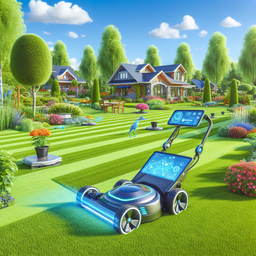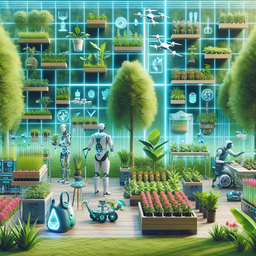Overview of Butterfly Gardening
Butterfly gardening is a specialized form of gardening that aims to attract and support butterfly populations in a given area. By creating an environment with specific plant species that serve as food sources and breeding grounds, butterfly gardens play a crucial role in supporting these delicate creatures. As noted by renowned entomologist Doug Tallamy, 'Butterfly gardening is an essential part of any serious conservation effort. It's not an accessory, it's fundamental.'
Importance of Creating Butterfly-Friendly Habitats
Creating butterfly-friendly habitats is essential for the survival and proliferation of butterfly species. As Dr. Karen Oberhauser, a leading expert in monarch butterfly conservation, explains, 'Butterfly gardens provide important resources for butterflies, including nectar, host plants for breeding, and sheltered areas for roosting and resting. These habitats are vital for supporting healthy butterfly populations.'
Key Elements of a Successful Butterfly Garden
A successful butterfly garden incorporates a variety of factors, including plant selection, garden layout, and maintenance practices. By understanding the key elements of a successful butterfly garden, enthusiasts can create a thriving ecosystem that attracts a diverse range of butterfly species.
Understanding Butterfly Behavior and Needs
Butterfly Species Diversity
With over 17,500 species of butterflies worldwide, understanding the diversity of butterfly species is crucial for creating a welcoming habitat. Different species have varying preferences for nectar plants, host plants, and environmental conditions, so a diverse planting strategy can attract a wide range of butterflies.
Lifecycle of a Butterfly
Butterflies undergo a remarkable transformation from egg to caterpillar to pupa to adult butterfly. By providing host plants for caterpillars to feed on and nectar-rich flowers for adult butterflies, gardeners can support all stages of the butterfly lifecycle.
Nutritional Needs
Nectar serves as the primary food source for adult butterflies, while caterpillars feed on specific host plants. Understanding the nutritional needs of butterflies is crucial for selecting the right plant species and maintaining a healthy garden ecosystem.
Shelter and Roosting Sites
Butterflies require sheltered areas for roosting and resting, especially during inclement weather or overnight. Providing suitable roosting sites, such as dense shrubs or butterfly houses, can help butterflies conserve energy and stay safe.
Planning Your Butterfly Garden
Selecting the Right Location
Choosing the right location for your butterfly garden is essential for its success. Butterflies thrive in sunny, sheltered areas with access to food and water sources. Avoiding pesticide use and selecting a location that is protected from strong winds can create an ideal environment for butterflies.
Designing a Garden Layout
The layout of your garden can influence its attractiveness to butterflies. By incorporating elements like winding paths, diverse plantings, and sunny open spaces, you can create a welcoming environment that encourages butterfly visitation.
Choosing Butterfly-Attracting Plants
Selecting the right plants is crucial for attracting butterflies to your garden. Native plant species are often preferred by local butterflies, as they have evolved together and provide the necessary food sources. Consult with local botanical gardens or butterfly experts for plant recommendations.
Providing Water Sources
Water is essential for butterflies, both as a source of hydration and for reproduction. Shallow dishes with wet sand or rocks can provide a safe water source for butterflies, while features like bird baths or small ponds can attract a variety of wildlife.
Case Studies in Successful Butterfly Gardening
Butterfly Garden at XYZ Botanical Garden: A Haven for Native Species
The butterfly garden at XYZ Botanical Garden serves as a thriving habitat for a diverse range of native butterfly species. By carefully selecting plant species, providing essential resources, and maintaining a welcoming environment, this garden has become a local hotspot for butterfly enthusiasts and researchers alike.
Community Butterfly Garden Project in ABC City: Engaging the Community in Conservation Efforts
The community butterfly garden project in ABC City has brought together residents, schools, and local organizations to create a shared space for butterflies and people alike. Through educational programs, volunteer initiatives, and community events, this project has raised awareness about the importance of butterfly conservation and sustainable gardening practices.
Maintaining Your Butterfly Garden
Regular Maintenance Practices
Regular maintenance is essential for keeping your butterfly garden healthy and vibrant. Practices like weeding, watering, pruning, and monitoring for pests help ensure that your garden remains a welcoming environment for butterflies.
Pest Control in a Butterfly-Friendly Manner
Pest control in a butterfly garden should be approached with caution to avoid harming beneficial insects like butterflies and their caterpillars. Natural pest control methods, such as handpicking pests, using insecticidal soaps, or introducing beneficial insects, can help manage pest populations without harming butterflies.
Creating a Sustainable Garden Environment
Creating a sustainable garden environment entails practices like composting, water conservation, and avoiding chemical inputs. By adopting eco-friendly gardening practices, butterfly enthusiasts can create an ecosystem that supports not only butterflies but a wide range of pollinators and wildlife.
Supporting Conservation Efforts Through Butterfly Gardening
The Role of Butterfly Gardens in Biodiversity Conservation
Butterfly gardens play a crucial role in biodiversity conservation by providing habitats for butterflies and other pollinators. By creating interconnected networks of butterfly gardens, individuals can contribute to broader conservation efforts and help preserve native plant and butterfly species.
Collaborating with Local Conservation Organizations
Collaborating with local conservation organizations and wildlife agencies can amplify the impact of butterfly gardening initiatives. By participating in citizen science projects, habitat restoration efforts, and advocacy campaigns, butterfly gardeners can engage with their communities and support larger conservation goals.
Conclusion
Recap of the Benefits of Butterfly Gardening
Butterfly gardening offers a multitude of benefits, from creating beautiful outdoor spaces to supporting pollinator populations and fostering a connection to nature. By following the principles outlined in this guide, individuals can enjoy the rewards of butterfly gardening while contributing to conservation efforts.
Encouragement to Start Your Butterfly Garden Today
The time to start your butterfly garden is now! By taking the first step towards creating a butterfly-friendly habitat, you can make a meaningful impact on local ecosystems and contribute to the preservation of butterflies and their habitats.
Call to Action: Join a Local Butterfly Gardening Club or Society for Further Engagement
For those seeking further engagement in butterfly conservation and gardening, joining a local butterfly gardening club or society can provide opportunities for learning, networking, and participation in community projects. By connecting with like-minded individuals, you can deepen your knowledge and commitment to butterfly conservation.
By following this comprehensive guide to butterfly gardening, you can not only create a beautiful and vibrant garden but also contribute to the conservation of these delicate winged creatures. Be a part of the movement to protect butterflies and their habitats – start your butterfly garden today!
Topics




